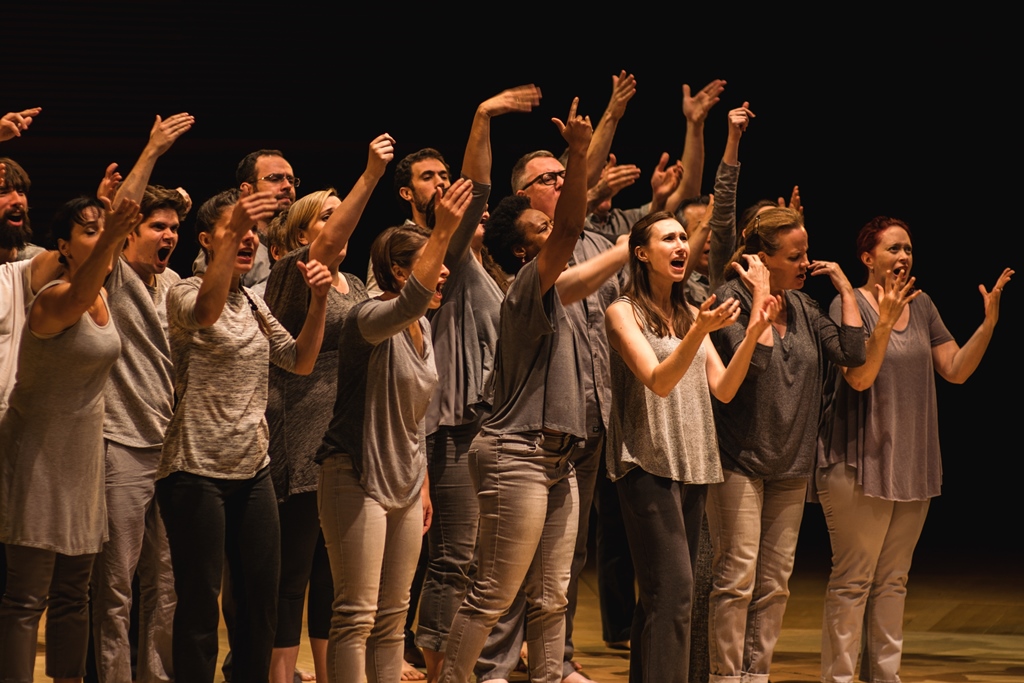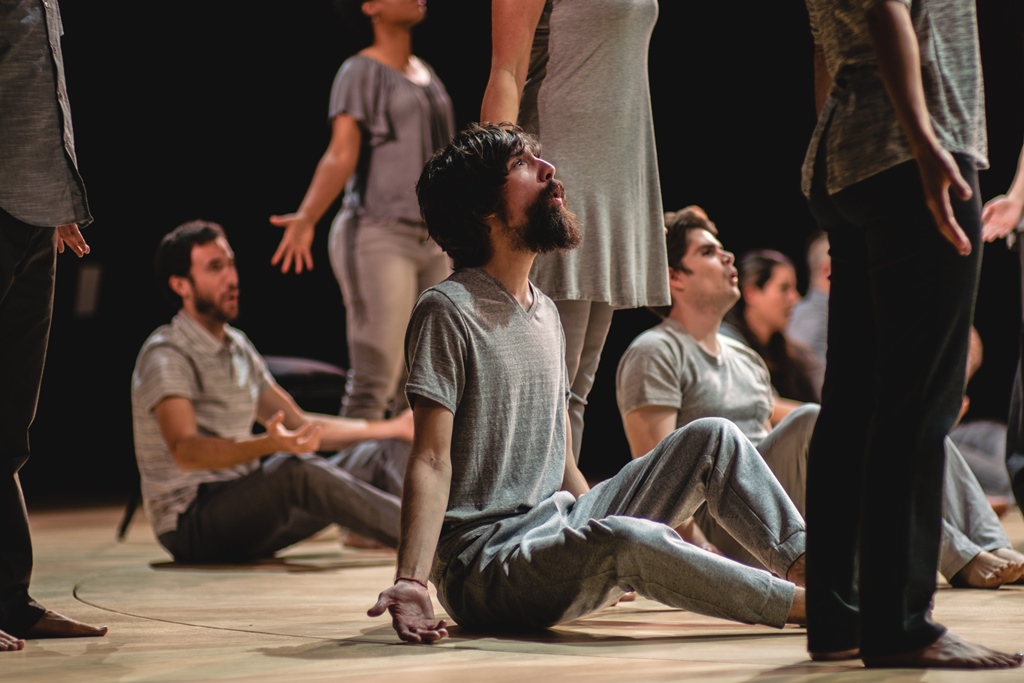Bad Boy of Opera meets A Cappella in Master Chorale's Splendid Season Opener
/By Truman C. Wang
10/29/2016
Photo Credit: Tao Ruspoli
For most people, when they hear of ‘Renaissance music’, the plainchant immediately comes to mind, followed by a big yawn or maybe thoughts of meditation yoga. Therefore, it is quite revolutionary for the L.A. Master Chorale to attempt to ‘stage’ this essentially static music like it’s a Wagnerian religious drama, replete with lighting effects and operatic acting. That it succeeded so brilliantly was due in no small part to 21 valiant members of the Master Chorale, who sang their parts from memory – beautifully and faultlessly – while acting out the often elaborate and physically demanding stage directions.
Orlando di Lasso’s 1694 masterpiece, Lagrime di San Pietro (“Tears of Saint Peter”), dedicated to Pope Clement VIII, portrays in 20 madrigals (plus the final motet) the pain and suffering of Peter’s betrayal ofJesus. The lay person and the agnostic will enjoy the work’s vivid imageries and musical word paintings; while fans of the Da Vinci Code will delight in the work’s mystical numerical symbolism of 3’s, 7’s and 21’s (Peter, after all, has a church in the Vatican bearing his name.)
Peter Sellars, the ‘bad boy of opera’, is eminently qualified for the job of staging "The Tears of Saint Peter". First, he and LAMC’s Grant Gershon both share the love for Early music. Second, he has staged other choral works by Bach and Stravinsky to critical acclaims. And last but not least, as fate would have it, his name is also Peter.
Operating on the concept of “visual polyphony”, Sellars has the singers interpret their lines using physical gestures and verbal inflections. The closest stylistic analogy I can think of would be playing J.S. Bach on the modern piano, where the monochrome sounds of the harpsichord give way to colors and shades of emotion. In the 7 lines of first stanza, for example, Peter’s sorrowful remorse and symbolic stabbings to the heart were conveyed through stabbing gestures and tone modulations based on word meaning (sudden lowering of voices on the word “morir/death”). Here and there, recitative-style declamations more common in 18th-Century opera than 16th-Century a cappella choral singing were employed to provide dramatic word accents. The Renaissance music purists may cringe at the histrionics, but there is no denying the drama of Di Lasso’s polyphonic lines was fully ‘visualized’ in this way.


The 21 singers were clothed in various shades of drab gray, moving about the stage with dancer-like athleticism while singing with astonishing purity and in total harmony. Artistic Director Grant Gershon, whose credentials also include Resident Conductor of the L.A. Opera, was also a dynamic presence, prancing around and in between his singers in carefully choreographed moves. James F. Ingalls provided some atmospheric lighting effects, most notably in “Come falda di neve”, where the harsh bluish tint of the snowbank gradually melted into the warm orange glow of springtime.
Going into the concert, I did not expect I would enjoy Lagrime as much as I did. Kudos for Sellars and the Master Chorale for opening my ears (and eyes) to the world of a cappella choral music with some indelible visual imageries. Many in the audience, I am sure, will never hear Renaissance music or polyphony the same way again.
Truman C. Wang is Editor-in-Chief of Classical Voice, whose articles have appeared in the San Gabriel Valley Tribune, the Pasadena Star-News, other Southern California publications, as well as the Hawaiian Chinese Daily.


